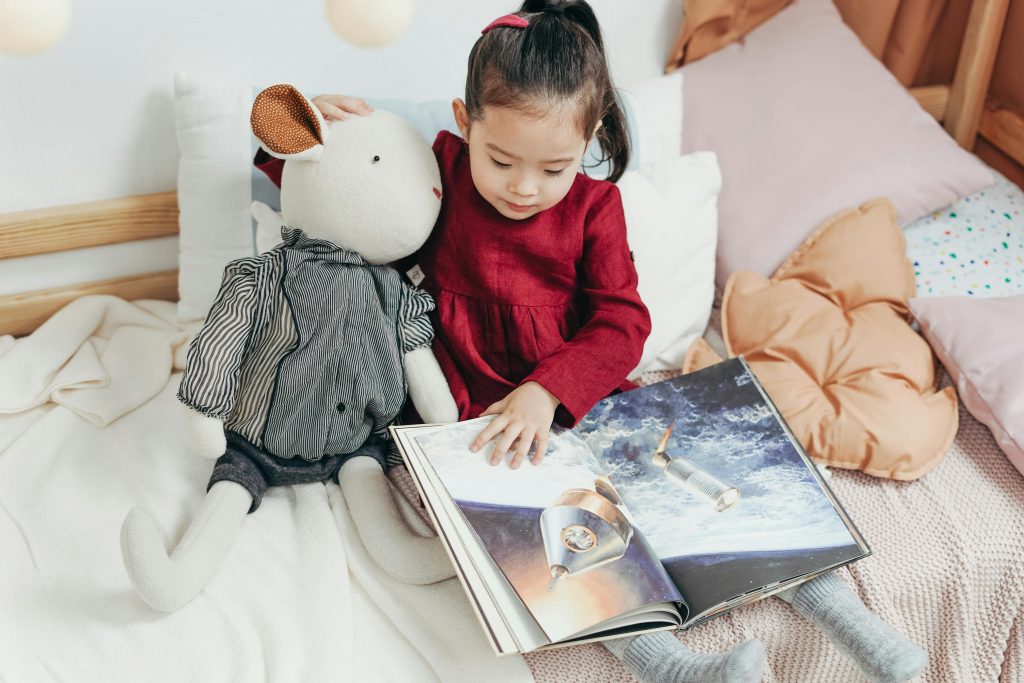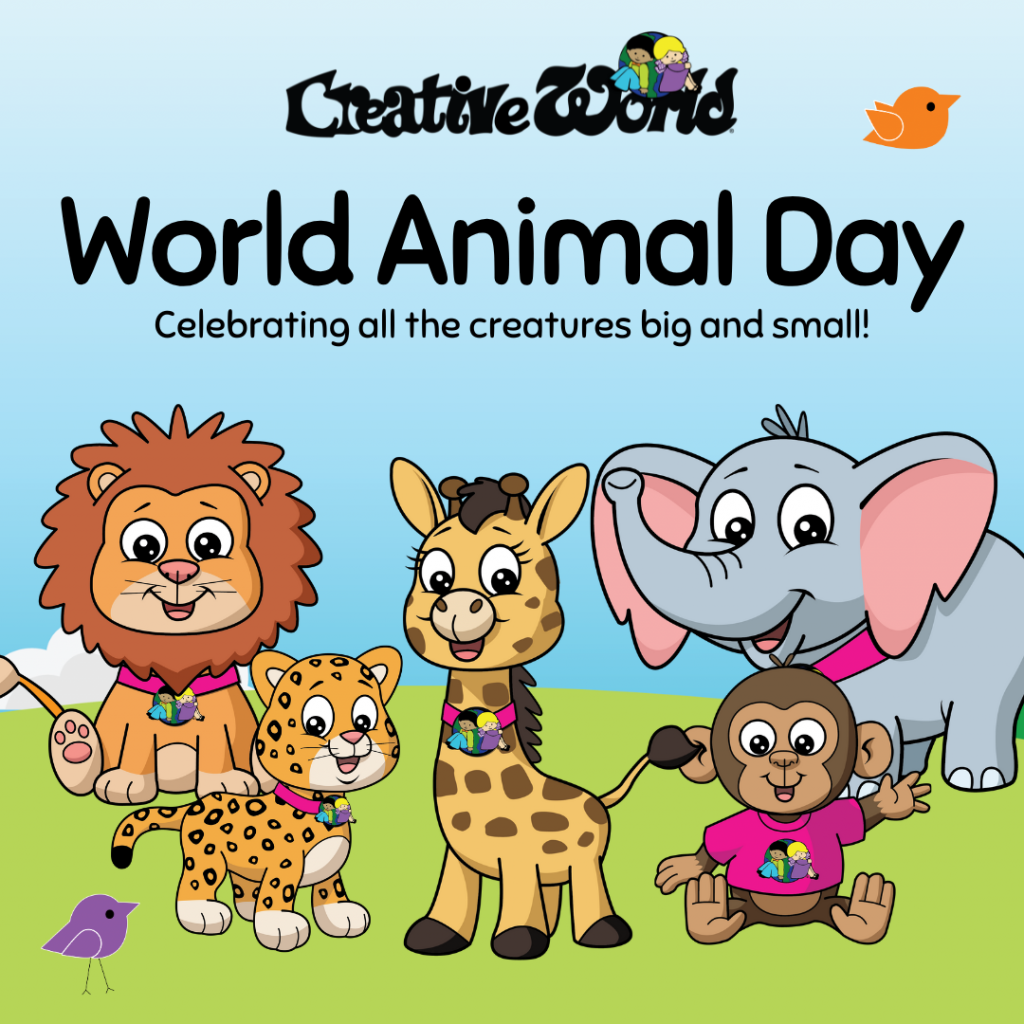
20 Wacky Animal Facts to Celebrate World Animal Day
Creative world school Oct 3, 2025Animals have a way of grabbing a child’s imagination. One moment your preschooler is crawling across the kitchen floor pretending to be a bear. The next, they’re crouched down whispering to ants like tiny bug scientists. Kids just light up when animals are part of the story.
World Animal Day, happening every year on October 4, is the perfect chance to lean into that natural curiosity and celebrate all the creatures that make our world so amazing. From flamingos to frogs, kids can’t get enough of the animal kingdom.
Keep reading for a kid-friendly history of this special day and some wild animal facts that will have your preschooler smiling, giggling, and asking for more.
The History Behind World Animal Day
World Animal Day officially started way back in 1931 when animal lovers met in Florence, Italy, to raise awareness on endangered species. They picked October 4 because it’s the feast day of St. Francis of Assisi, who’s remembered for his love of all creatures. Stories say he preached to birds and even calmed a wild wolf.
Since then, the day’s grown into a worldwide tradition. More than 100 countries now join in on the day, celebrating animals in their own fun ways. Some people host pet adoption events, others raise money to protect wildlife, and plenty of families, just like yours, spend time noticing the little critters right outside their door. Be sure to check out local World Animal Day events to see what ‘roaring’ adventures your neighborhood libraries or museums have planned.

20 Wacky Animal Facts Your Preschooler Will Totally Love
Ready for some fun? Get ready to go wild! These animal facts are funny, surprising, and perfect for kids who love creatures big and small.
1. Octopuses have three hearts
Two hearts work hard to pump blood to their gills, and the third heart sends blood to the rest of their body. But here’s the twist: when they swim, the big heart takes a break and stops beating. It’s like their version of a nap.
2. Sloths hold their breath longer than dolphins
Even though sloths look like slow-motion fuzzballs, they’ve got some wild abilities. They can hold their breath for up to 40 minutes by slowing their heart rate way down. Dolphins? They usually come up for air every 10 minutes or so.
3. Flamingos turn pink from their food
Flamingos start out gray and slowly turn pink because of the shrimp and algae they eat. Those foods are packed with natural pigments called carotenoids, which tint their feathers. So in a way, flamingos wear their food.
4. Frogs can freeze and still survive
Wood frogs in cold places freeze almost completely during winter. Their hearts stop beating and they turn icy. But when spring shows up, they thaw out and hop off like nothing ever happened. Nature’s full of surprises.
5. A group of porcupines is called a prickle
If you ever see more than one porcupine together, you can say you found a prickle. It’s a real word, and it makes total sense when you think of all those prickly quills in one place.
6. Shrimp have their hearts in their heads
Well, sort of. Their heart is behind their head, protected by a hard shell. Technically it’s in their thorax, but to a preschooler? It’s right up top and weird enough to be hilarious.
7. Kangaroos can’t hop backward
Their strong legs and long tails make moving backward impossible. So kangaroos only go forward. Just like kids when they see the snack table.
8. A blue whale’s tongue is heavier than an elephant
Blue whales are the biggest animals on Earth, and their tongues alone can weigh as much as an elephant. Imagine that every time your child sticks out their tongue and roars.
9. Giraffes sleep less than an hour a day
They nap in tiny bursts, usually standing up. On busy days, they might only sleep 30 minutes total. Yet they never seem grumpy about it. A real parenting mystery.
10. Starfish don’t have brains
No brain, no problem. Starfish still know how to eat, move, and grow back arms if one breaks off. They’re basically sea superheroes.
11. Crocodiles can’t stick out their tongues
Their tongues are stuck to the roof of their mouths, so they can’t move them around like we can. Probably helps them stay extra sneaky in the water.
12. A snail can nap for three years
Snails are slow in every way. When the weather’s dry and food is scarce, some snails tuck into their shells and sleep for up to three years. That’s the ultimate nap time.
13. Elephants use their ears to stay cool
Elephant ears are full of tiny blood vessels. When it’s hot, they flap their ears to help cool their whole body down. It’s like built-in air conditioning.
14. Penguins propose with pebbles
When a male penguin wants to impress a female, he finds the smoothest, shiniest pebble and offers it as a gift. If she likes it, she keeps it. That’s penguin love.
15. Cows have best friends
Cows get attached to certain buddies in the herd. They’ll stick close, graze together, and even get anxious when separated. Moo BFFs are a real thing.
16. Parrots name their babies
Some types of parrots give each chick a unique sound when they’re born, kind of like giving them a name. The chicks keep that sound for life and respond to it just like we do with our names.
17. Sea otters hold hands when they sleep
To keep from drifting apart in the water, sea otters float on their backs and hold paws while they nap. Otter snuggles might be the cutest thing ever.
18. A chameleon’s tongue is longer than its body
When it’s time to catch dinner, a chameleon’s tongue shoots out lightning fast. It can stretch longer than its entire body to grab tasty bugs. Bet your preschooler will want to try that with spaghetti.
19. Male seahorses carry the babies
In the world of seahorses, dads do the baby-holding. The male seahorse has a special pouch, kind of like a kangaroo, where he carries hundreds of tiny babies until they’re ready to swim on their own. Seahorse dads are seriously cool.
20. Butterflies taste with their feet
Butterflies don’t use their mouths to taste like we do. They have special sensors on their feet that let them “taste” whatever they land on. So when a butterfly touches down on a flower, it’s figuring out if it’s snack time.

How Fun Animal Facts Help Preschoolers Learn and Grow
Sure, these facts are funny, but they also help kids see animals as amazing and unique. Once kids notice just how fascinating creatures are, it’s easier for them to care about protecting them. Curiosity is the first step toward empathy.
You can build on that at home. Take a short walk and look for bugs or birds. Talk about why we don’t pull on a dog’s ears or chase ducks at the park. Let your preschooler refill the birdbath, pour food into the cat’s dish, or help brush the dog. These tiny actions stick with kids and teach them that animals deserve care and respect.
Even pretend play is a big deal. When your child gallops like a horse, slithers like a snake, or flaps like a butterfly, they’re practicing empathy in their own playful way. Plus, all that movement builds strong bodies and coordination.
Growing Wild Curiosity at Creative World School
At Creative World School, we love turning curiosity into connection. World Animal Day is just one more chance to spark wonder in the classroom. Kids might create animal homes out of blocks, explore habitats in sensory bins, or pretend to run their own zoo.
Our teachers make space for big questions, silly play, and plenty of discovery. World Animal Day may come once a year, but we celebrate curiosity and care every single day.
Want to see it for yourself? Find your local Creative World School and schedule a visit. We’d love to meet your little animal lover and help their curiosity run wild.


